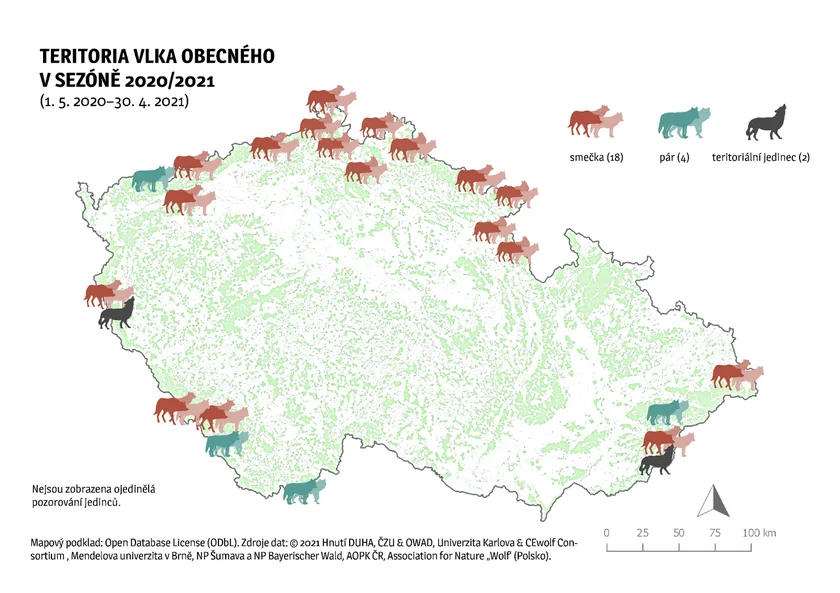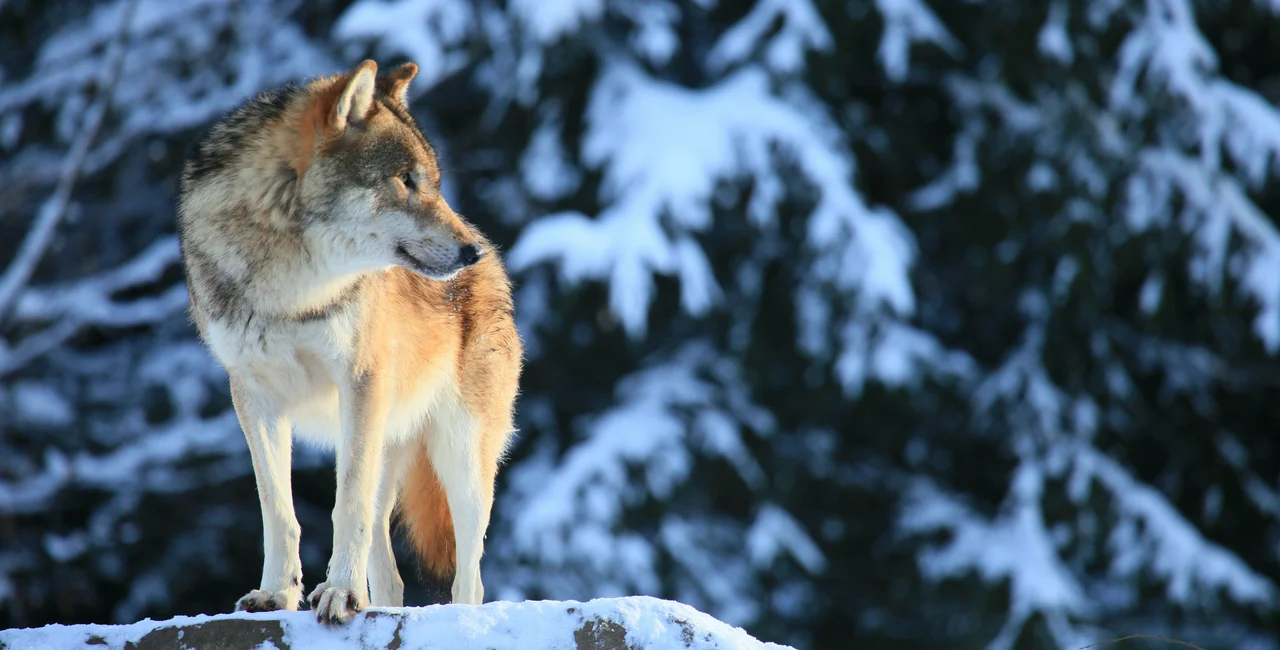There are now 24 populations of wolves living in the Czech Republic, according to information shared on Friday by Friends of the Earth Czech Republic (Hnutí DUHA), who monitor wolves living in the country in cooperation with local conservationists.
Two new wolf packs were discovered living in the country during the 2021 season, one in the Orlické hory mountain range and another in the forests of Český les, near the Czech Republic's border with Germany.
The new wolf packs have been confirmed through genetic testing, where conservationists examine material left by wolves as they roam they Czech countryside. Through this method, officials are able to pinpoint distinct communities of wolves as they move about the country.

Of the 24 distinct wolf populations in the Czech Republic, 18 are packs (which typically consist of 4-6 wolves), four are pairs, and two are lone wolves. They live across the Czech Republic, but almost all of them remain in areas close to the country's borders with Germany, Austria, Poland, and Slovakia.
According to the latest data, there are now about 80-100 wolves confirmed to be living in the Czech Republic, which represents a significant increase over the 50-80 wolves estimated to be living in the country in 2020.
The latest data provided by Friends of the Earth covers May 2020 through April 2021, which corresponds with the wolves' breeding season. Young wolves are typically born in April.
Wolves had essentially been exterminated in the Czech Republic for much of the 1800s and 1900s, but began to slowly return to the country in the 1990s. While hunters killed many of the first wolves to return in the 90s, conservation efforts have greatly increased over the past 10 years, leading to the thriving number of new populations.
Most wolves come to the Czech Republic from the north through Germany and Poland, but different populations have been reported at many border areas. While wolf packs typically stick to their own communities, wolves from different countries have used the Czech Republic as a transit point.
"Individuals from different populations can meet in the Czech Republic," a Friends of the Earth spokesperson noted.
"For example, in a sample taken at the end of November 2020, scientists discovered a male from the [Polish] Carpathians in the Orlické hory mountains. Three weeks later, the same individual was identified again in the Carpathians - this time, on the Slovak side at the Javorníky Mountains."
The rise in genetic testing in recent years has allowed local conservationists to better track the movement of wolves in the Czech Republic. Scientists from Mendel University in Brno, the Czech University of Life Sciences in Prague, the Šumava National Park Administration, and the Nature Conservation Agency of the Czech Republic have worked with Friends of the Earth to monitor the wolf populations.
Still, their capabilities are limited. Labs processed around 400 genetic samples during the 2020-21 season, but new populations can be difficult to locate outside of the Czech Republic's national parks and protected areas.
"The map may not capture all of the wolf populations," says Mendel University's Miroslav Kutal.
"Our monitoring capacities are limited, and the presence of wolves may not be detected outside of protected areas or where there is no damage to livestock."
The number of wolves living in the Czech Republic is expected to continue to rise in the coming years. Friends of the Earth Czech Republic encourages any new sightings of wolves throughout the country to be reported by email at stopy@selmy.cz.












 Reading time: 3 minutes
Reading time: 3 minutes 























